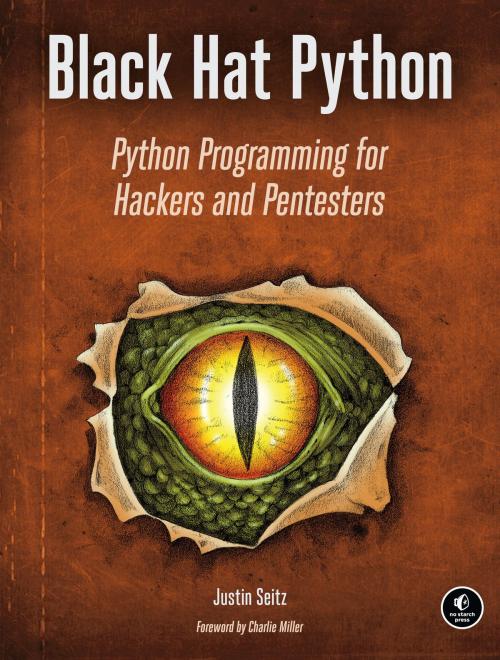Black Hat Python
Python Programming for Hackers and Pentesters
Nonfiction, Computers, Networking & Communications, Computer Security, Operating Systems, Application Software| Author: | Justin Seitz | ISBN: | 9781593276553 |
| Publisher: | No Starch Press | Publication: | December 21, 2014 |
| Imprint: | No Starch Press | Language: | English |
| Author: | Justin Seitz |
| ISBN: | 9781593276553 |
| Publisher: | No Starch Press |
| Publication: | December 21, 2014 |
| Imprint: | No Starch Press |
| Language: | English |
When it comes to creating powerful and effective hacking tools, Python is the language of choice for most security analysts. But just how does the magic happen?
In Black Hat Python, the latest from Justin Seitz (author of the best-selling Gray Hat Python), you’ll explore the darker side of Python’s capabilities—writing network sniffers, manipulating packets, infecting virtual machines, creating stealthy trojans, and more.
You’ll learn how to:
–Create a trojan command-and-control using GitHub
–Detect sandboxing and automate common malware tasks, like keylogging and screenshotting
–Escalate Windows privileges with creative process control
–Use offensive memory forensics tricks to retrieve password hashes and inject shellcode into a virtual machine
–Extend the popular Burp Suite web-hacking tool
–Abuse Windows COM automation to perform a man-in-the-browser attack
–Exfiltrate data from a network most sneakily
Insider techniques and creative challenges throughout show you how to extend the hacks and how to write your own exploits.
When it comes to offensive security, your ability to create powerful tools on the fly is indispensable. Learn how in Black Hat Python.
Uses Python 2
When it comes to creating powerful and effective hacking tools, Python is the language of choice for most security analysts. But just how does the magic happen?
In Black Hat Python, the latest from Justin Seitz (author of the best-selling Gray Hat Python), you’ll explore the darker side of Python’s capabilities—writing network sniffers, manipulating packets, infecting virtual machines, creating stealthy trojans, and more.
You’ll learn how to:
–Create a trojan command-and-control using GitHub
–Detect sandboxing and automate common malware tasks, like keylogging and screenshotting
–Escalate Windows privileges with creative process control
–Use offensive memory forensics tricks to retrieve password hashes and inject shellcode into a virtual machine
–Extend the popular Burp Suite web-hacking tool
–Abuse Windows COM automation to perform a man-in-the-browser attack
–Exfiltrate data from a network most sneakily
Insider techniques and creative challenges throughout show you how to extend the hacks and how to write your own exploits.
When it comes to offensive security, your ability to create powerful tools on the fly is indispensable. Learn how in Black Hat Python.
Uses Python 2















